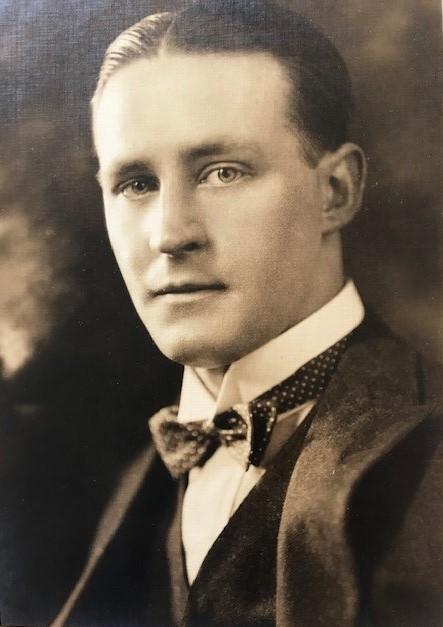James Bell, the son of George Turnbull Bell, a grain merchant and importer, was born in Melbourne and educated at Caulfield Grammar School, the University of Melbourne, and the Royal Melbourne Hospital. His mother was the daughter of Robert Scott, who was both a Presbyterian minister and a medical practitioner.
On qualifying in 1917, Bell enlisted with the AAMC and served overseas with the AIF from 1917-1919. In 1920 he was Resident Medical Officer at the Royal Melbourne Hospital. There he was also house physician to Dr J.F. Wilkinson whose chief interest was in gastroenterology. In that year he took the Melbourne MD.
He then went to London, to Guy’s Hospital, and in 1921-22 he was with Sir Arthur Hurst at Guy’s and the New Lodge Clinic. He also had an association with Lord Moynihan at Leeds. In Brain, vol 45, 1922, appeared an important paper by A.F. Hurst and J.R. Bell: The pathogenesis of subacute combined degeneration of the spinal cord with special reference to its connection with Addison’s (pernicious) anaemia, achlorhydria and intestinal infection’. Bell wrote other papers on gastric secretion and on diabetes at this time, but on his return to Australia wrote very little. His last paper on ‘Surgery in Diabetes’ appeared in the Australian and New Zealand Journal of Surgery in 1931.
Bell was a member of the BMA and served on the Victoria Branch Council.
In 1924 he was appointed Honorary Physician to Out-Patients at the Alfred Hospital, and in 1933 he became Honorary Physician to In-Patients. In the years before the second world war he withdrew more and more from his clinical duties and teaching and he was not reappointed after his return from the war.
When the second world war came he had volunteered and was appointed to the 7th Australian General Hospital, serving in Palestine with the rank of Major. On his return in 1946 his association with the Alfred Hospital had come to an end and shortly afterwards he retired from practice.
It seemed that Bell was endowed with all the qualities and attributes that made for success in the traditional life of a consulting physician between the two world wars. Few young physicians returned from overseas in those days with such experience and achievement. Good looking, and a good speaker and teacher, he spoke with grace to colleagues, students and patients. Despite this one felt that he was both reticent and remote. As time passed it seemed that he found consulting practice, and its ties with a teaching hospital, irksome. In retrospect perhaps one reason may be found in the fact that his interest was confined to a special branch of medicine at a time when he was expected both to practise and to teach as a general physician. He had purchased an historic pastoral property, Barragunda, where he found the solace that escaped him in professional life.
Sir Clive Fitts
[Sources: RACP; AMA]

